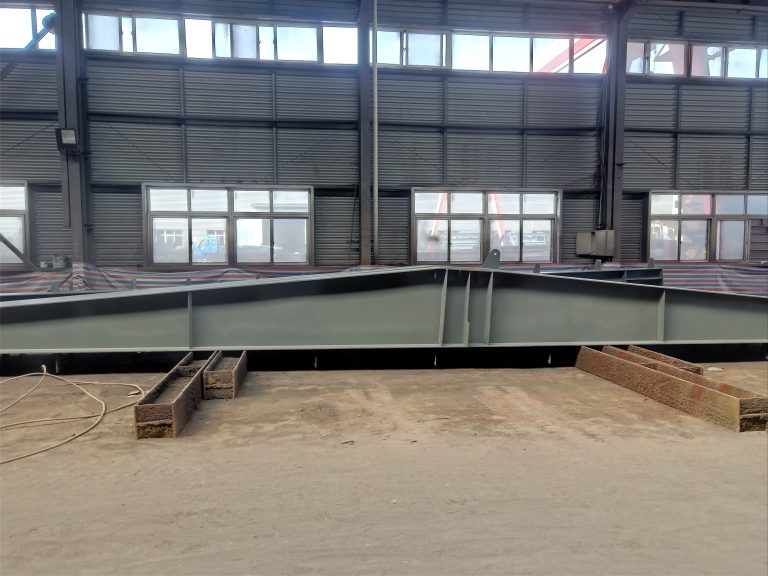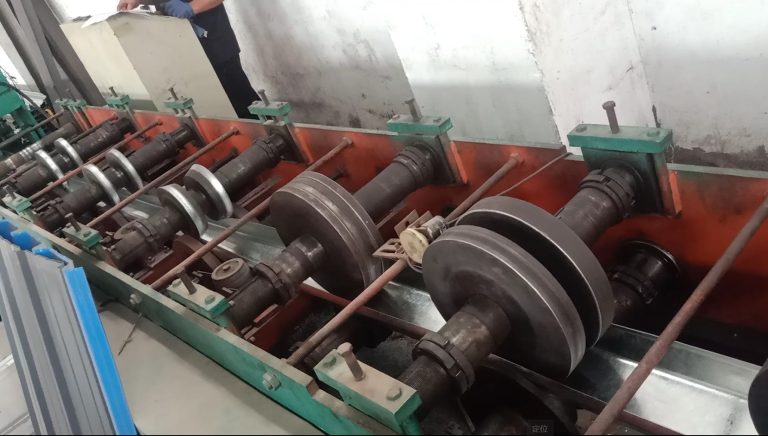Table of Contents
Advancements in Sensor Technology for Real-Time Monitoring of Steel Structures
Steel structures are a common sight in modern architecture, providing strength and durability to buildings of all shapes and sizes. However, ensuring the safety and integrity of these structures is of utmost importance, especially in the face of natural disasters or wear and tear over time. This is where intelligent structural health monitoring technology comes into play, offering real-time insights into the condition of steel structures to prevent potential failures and ensure the longevity of the building.
One of the key advancements in this field is the development of sensors that can be embedded within the structure itself to monitor various parameters such as strain, temperature, and vibration. These sensors are designed to provide continuous data on the structural health of the building, allowing engineers to detect any abnormalities or potential issues before they escalate into major problems. By collecting and analyzing this data in real-time, stakeholders can make informed decisions about maintenance and repairs, ultimately saving time and money in the long run.
The innovation of intelligent structural health monitoring technology has revolutionized the way we approach the maintenance and safety of steel structures. Traditional methods of inspection, such as visual inspections or periodic testing, are often time-consuming and can be prone to human error. With the use of sensors, engineers can now have a constant stream of data at their fingertips, allowing them to monitor the health of the structure in real-time and respond quickly to any changes or abnormalities.

Furthermore, the data collected by these sensors can be analyzed using advanced algorithms and machine learning techniques to predict potential failures or issues before they occur. This predictive maintenance approach can help to prevent costly repairs and downtime, as well as improve the overall safety and reliability of the structure. By leveraging the power of technology, engineers can now take a proactive approach to maintenance and ensure the long-term sustainability of steel structures.
In addition to monitoring the structural health of the building, intelligent sensors can also be used to optimize energy efficiency and reduce operational costs. By tracking factors such as temperature, humidity, and occupancy levels, building managers can make informed decisions about heating, cooling, and ventilation systems to maximize energy savings. This not only benefits the environment but also helps to reduce operating expenses for building owners and tenants.
Overall, the innovation of intelligent structural health monitoring technology has brought about significant advancements in the field of steel structure buildings. By leveraging the power of sensors, data analytics, and machine learning, engineers can now monitor the health of structures in real-time, predict potential failures, and optimize energy efficiency. This not only improves the safety and reliability of buildings but also helps to reduce maintenance costs and improve overall sustainability. As technology continues to evolve, we can expect to see even more innovative solutions that will further enhance the safety and performance of steel structures in the future.
Implementing Artificial Intelligence for Predictive Maintenance of Steel Buildings
Steel structure buildings are a common sight in urban landscapes, providing strength, durability, and versatility in construction. However, like any other structure, steel buildings are subject to wear and tear over time, which can compromise their structural integrity and safety. To address this issue, researchers and engineers have been developing innovative technologies for structural health monitoring (SHM) to detect and assess potential damage in steel structures before it becomes a serious problem.
One of the most promising advancements in SHM technology is the integration of artificial intelligence (AI) for predictive maintenance of steel buildings. By combining AI algorithms with sensor data, engineers can analyze the structural health of a building in real-time, identify potential issues, and predict when maintenance or repairs may be needed. This proactive approach to maintenance can help prevent costly repairs, extend the lifespan of a building, and ensure the safety of its occupants.
The implementation of AI in SHM for steel buildings involves the use of sensors placed strategically throughout the structure to collect data on factors such as temperature, humidity, vibration, and strain. This data is then fed into AI algorithms that can analyze patterns, detect anomalies, and predict potential failures based on historical data and machine learning models. By continuously monitoring the health of the structure, AI can provide early warnings of potential issues, allowing engineers to take corrective action before a problem escalates.
One of the key benefits of using AI for predictive maintenance in steel buildings is its ability to detect subtle changes in the structure that may not be visible to the naked eye. For example, AI algorithms can analyze vibration data to detect microcracks or fatigue in the steel beams, which may indicate a potential failure in the future. By catching these issues early, engineers can address them before they pose a serious threat to the building’s integrity.
Another advantage of AI-based SHM technology is its ability to adapt and learn from new data over time. As more data is collected and analyzed, AI algorithms can improve their accuracy and predictive capabilities, making them more effective at identifying potential issues and predicting maintenance needs. This continuous learning process allows engineers to stay ahead of potential problems and make informed decisions about when and how to perform maintenance on a steel building.
In addition to improving safety and reducing maintenance costs, AI-based SHM technology can also help optimize the performance of steel buildings. By monitoring the health of the structure in real-time, engineers can identify areas where improvements can be made to enhance efficiency, reduce energy consumption, and extend the lifespan of the building. This proactive approach to maintenance and optimization can help steel buildings operate more effectively and sustainably over the long term.
Overall, the innovation of intelligent structural health monitoring technology for steel structure buildings represents a significant advancement in the field of construction and engineering. By harnessing the power of artificial intelligence for predictive maintenance, engineers can ensure the safety, durability, and performance of steel buildings while minimizing maintenance costs and downtime. As this technology continues to evolve and improve, it has the potential to revolutionize the way we design, construct, and maintain steel structures in the future.






